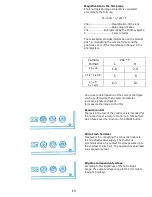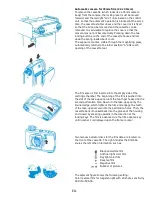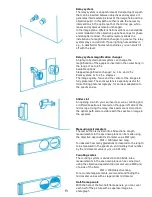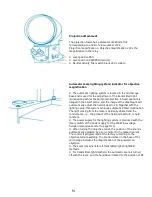
F5
Care of the microscope
Tripod
⚫ The microscope should be covered after use with a protective cover. From time to time, clean the stand with a
clean rag.
⚫ A mild water-based surface cleaner is suitable for the cleaning of painted parts. Alcohol must never used, as this
can damage the paint.
⚫ On the stage, stains may be caused by solvents, so you can remove them by rubbing with paraffin oil or acid-free
Vaseline.
Optics
⚫ Objectives, eyepieces, and condensers may not be unscrewed during cleaning by a non-expert.
⚫ Dust the freely accessible glass surfaces with an artist’s brush: degreased, cleaned well in solvent, and completely
dried before use.
⚫ Fingerprints or dirt be cleaned with lens tissue, clean lab wipes, cotton swabs, or a non-abrasive cloth, pre-
moistened with chemically pure xylene or water-based lens cleaner. Do not use alcohol!
Lenses with concave front lens:
⚫ Remove gross contaminants with air or blast of canned air, or moistened soft cloth, lens tissue or cotton swab.
⚫ As a solvent (only if absolutely necessary) use pure xylene.
⚫ The often still-lingering coating can be removed with a piece of polystyrene foam. However, the previously used
solvents must have evaporated completely. It is pressed against the front lens and rotated, whereby the lipophilic
material should completely remove particularly greasy deposits. The adherent polystyrene particles are blown off.
Immersion oil
⚫ Immersion oil should be cleaned off immediately after use.
⚫ The immersion oil can be wiped off with lens tissue or a linen cloth. The remaining oil film is removed with a linen
cloth which has been moistened with lens cleaner or xylene.
⚫ Final cleaning is carried out, where appropriate, with chemically pure xylene. Do not use alcohol!
We are constantly striving to perfect our products, to meet the demands of the most modern investigation
techniques and to point the way to new methods. This endeavor requires occasional changes to the mechanical and
optical construction of improvable instruments. All descriptions and illustrations in catalogs and instructions for use,
as well as all numerical information on mechanical structure and optical data, are therefore not binding.
21.25/1 GA - UNIVAR - D - 11-75
Summary of Contents for Univar
Page 1: ...Reichert Univar Manual...
Page 2: ......
Page 48: ...D6 blank no content...
Page 58: ...E2 blank no content...

































